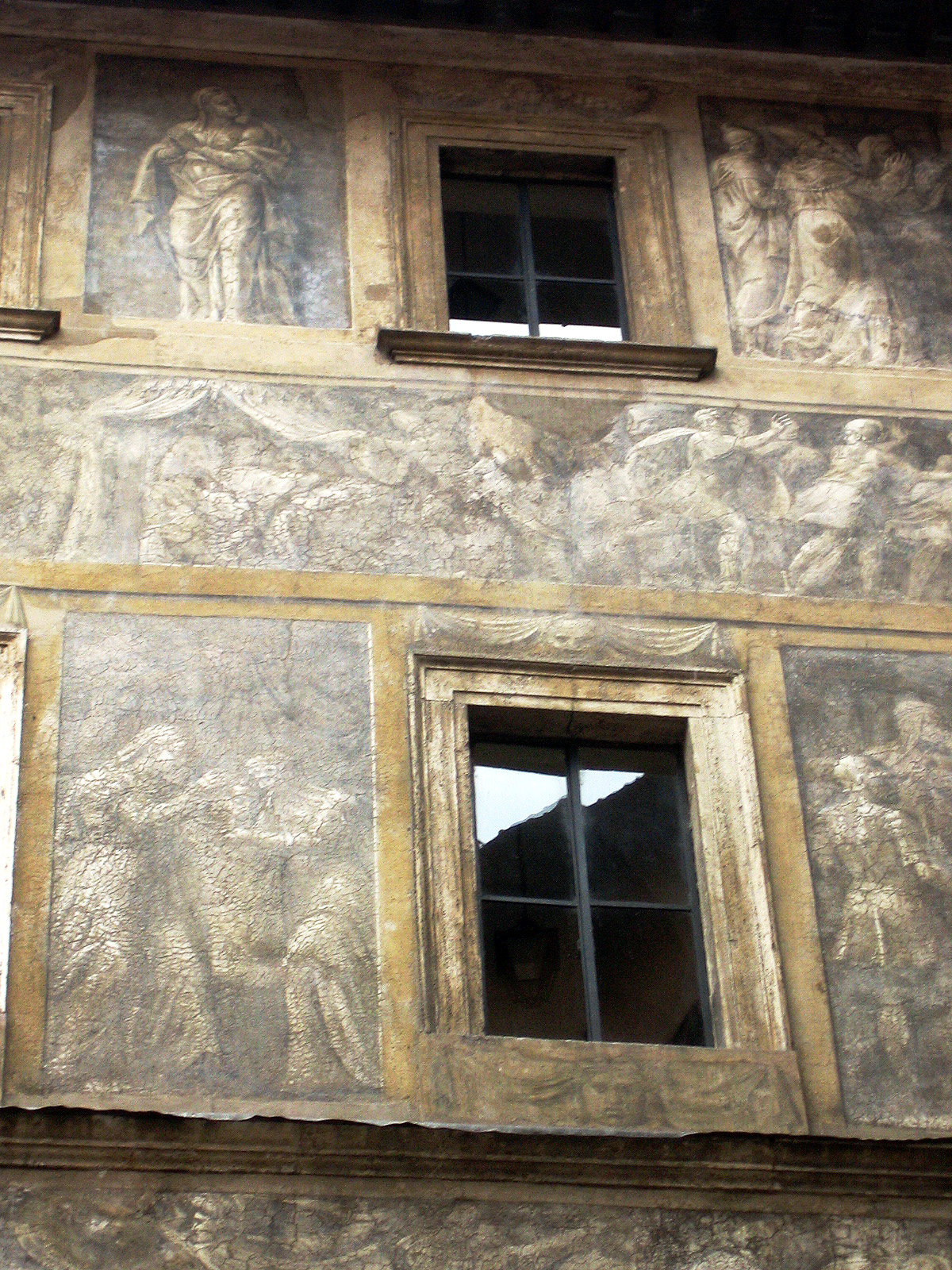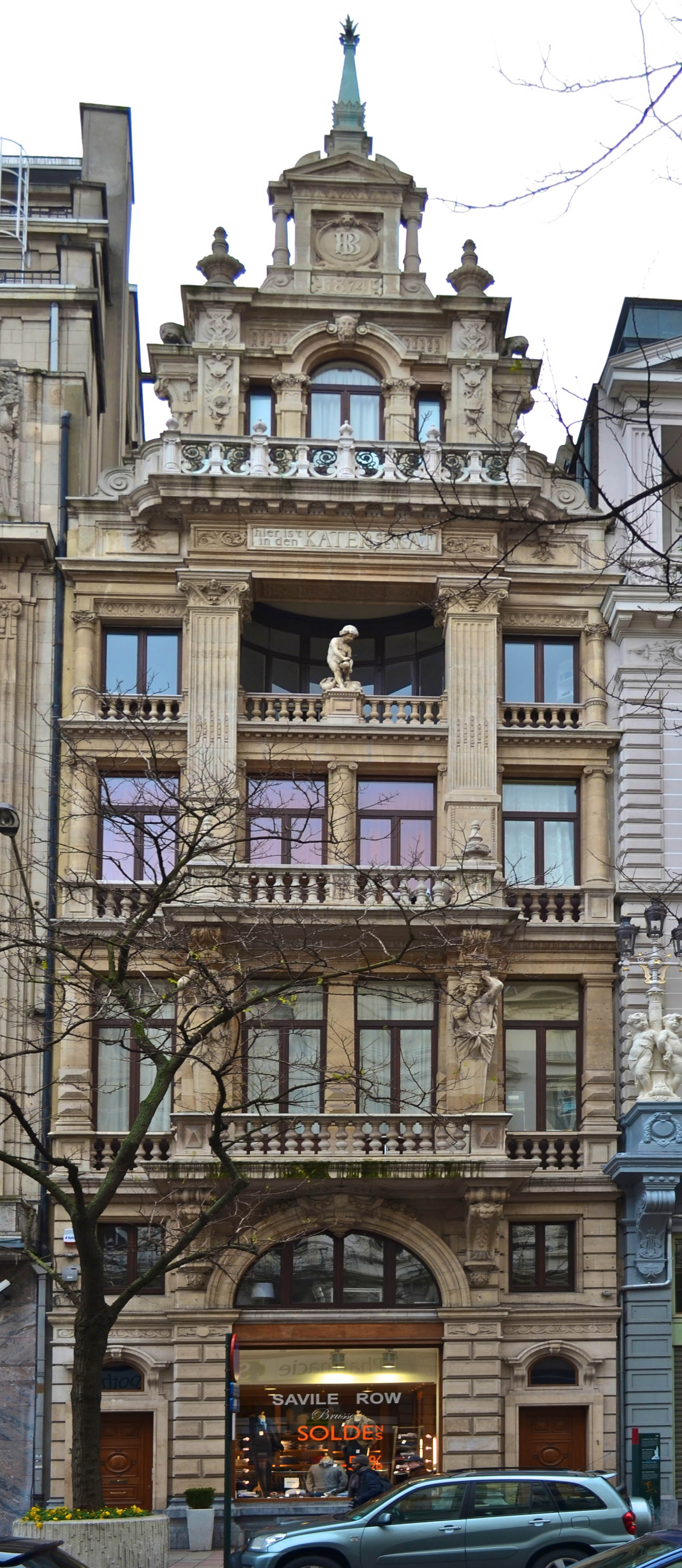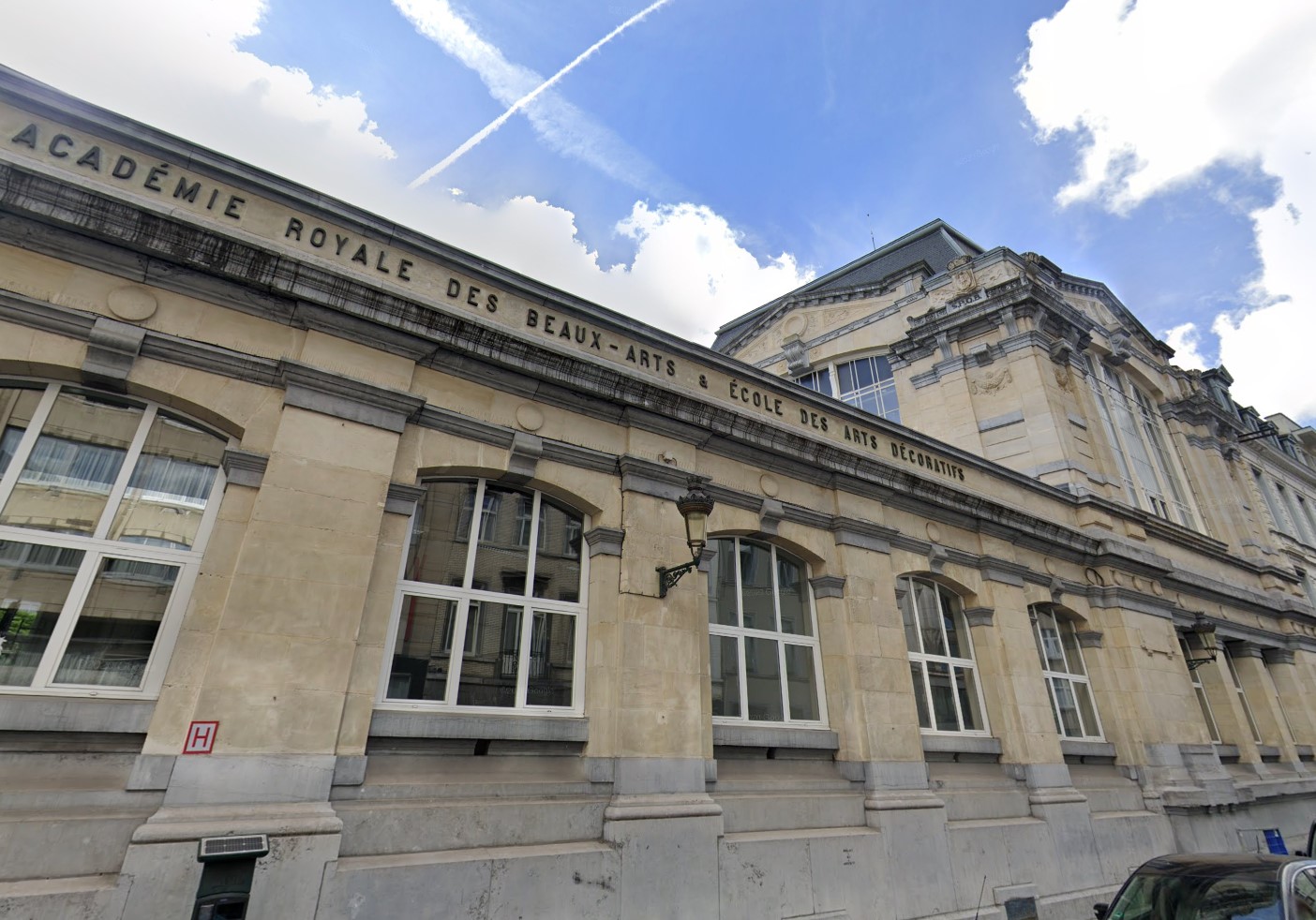|
Art Nouveau In Brussels
The Art Nouveau movement of architecture and design first appeared in Brussels, Belgium, in the early 1890s, and quickly spread to France and to the rest of Europe. It began as a reaction against the formal vocabulary of European academic art, eclecticism and historicism of the 19th century, and was based upon an innovative use of new materials, such as iron and glass, to open larger interior spaces and provide maximum light; curving lines such as the whiplash line; and other designs inspired by plants and other natural forms. The early Art Nouveau designers in Brussels created not only art and architecture but also furniture, glassware, carpets, and even clothing and other decoration to match. Some of Brussels' municipalities, such as Schaerbeek, Etterbeek, Ixelles, and Saint-Gilles, were developed during the heyday of Art Nouveau and have many buildings in that style. After 1900, the style gradually became more formal and geometric. The final Art Nouveau landmark in Brussel ... [...More Info...] [...Related Items...] OR: [Wikipedia] [Google] [Baidu] |
Hôtel Tassel
The Hôtel Tassel (french: Hôtel Tassel, nl, Hotel Tassel) is a town house in Brussels, Belgium, designed by Victor Horta for the scientist and professor Emile Tassel, and built from 1892 to 1893. It is generally considered the first true Art Nouveau building, because of its highly innovative plan and its ground-breaking use of materials and decoration. It is located at 6, /. Together with three other town houses of Victor Horta, including Horta's own house and workshop, it was added to the UNESCO World Heritage list in 2000. History The first town house built by Victor Horta was the Autrique House. This dwelling was already innovative for its application of a novel Art Nouveau decorative scheme that did not include references to other historical styles. However, the floor plan and spatial composition of the Autrique House remained rather traditional. On the deep and narrow building plot, the rooms were organised according to a traditional scheme used in most Belgian tow ... [...More Info...] [...Related Items...] OR: [Wikipedia] [Google] [Baidu] |
UNESCO
The United Nations Educational, Scientific and Cultural Organization is a specialized agency of the United Nations (UN) aimed at promoting world peace and security through international cooperation in education, arts, sciences and culture. It has 193 member states and 12 associate members, as well as partners in the non-governmental, intergovernmental and private sector. Headquartered at the World Heritage Centre in Paris, France, UNESCO has 53 regional field offices and 199 national commissions that facilitate its global mandate. UNESCO was founded in 1945 as the successor to the League of Nations's International Committee on Intellectual Cooperation.English summary). Its constitution establishes the agency's goals, governing structure, and operating framework. UNESCO's founding mission, which was shaped by the Second World War, is to advance peace, sustainable development and human rights by facilitating collaboration and dialogue among nations. It pursues this objec ... [...More Info...] [...Related Items...] OR: [Wikipedia] [Google] [Baidu] |
Sgraffiti
''Sgraffito'' (; plural: ''sgraffiti'') is a technique either of wall decor, produced by applying layers of plaster tinted in contrasting colours to a moistened surface, or in pottery, by applying to an unfired ceramic body two successive layers of contrasting slip or glaze, and then in either case scratching so as to reveal parts of the underlying layer. The Italian past participle ''sgraffiato'' is also used, especially of pottery. Etymology The word ''sgraffito'' comes from the Italian language and is derived from ''graffiare'' ("to scratch"), ultimately from the Greek (''gráphein'', "to write"). Related terms include '' graffito'' and ''graffiti''. History Sgraffito on walls has been used in Europe since classical times. It was popularized in Italy in the 15th and 16th centuries and can be found in African art. In combination with ornamental decoration these techniques formed an alternative to the prevailing painting of walls. The technical procedure is relatively simp ... [...More Info...] [...Related Items...] OR: [Wikipedia] [Google] [Baidu] |
Hankar House
The Hankar House (french: Maison Hankar, nl, Huis Hankar) is a town house built by the Belgian architect Paul Hankar in 1893. It is located at 71, / in the Saint-Gilles municipality of Brussels, Belgium. It is considered, along with the Hôtel Tassel by Victor Horta, built at the same time, one of the first houses in Art Nouveau style. Architecture From 1879 to 1904, Hankar worked in the studio of the prominent architect Henri Beyaert, a master of eclectic and neoclassical architecture. Through Beyaert, Hankar became an admirer of Eugène Viollet-le-Duc, the French architect who advocated the use of innovative new materials such as iron and glass, while drawing from historical architecture for inspiration. In 1893, he designed and built the Hankar House, his own residence, at 71, /, in the Saint-Gilles municipality of Brussels. The town house Hankar built, on a narrow lot in a wealthy Brussels neighborhood near the Avenue Louise/Louizalaan, was very different from the build ... [...More Info...] [...Related Items...] OR: [Wikipedia] [Google] [Baidu] |
Eugène Viollet-le-Duc
Eugène Emmanuel Viollet-le-Duc (; 27 January 181417 September 1879) was a French architect and author who restored many prominent medieval landmarks in France, including those which had been damaged or abandoned during the French Revolution. His major restoration projects included Notre-Dame de Paris, the Basilica of Saint Denis, Mont Saint-Michel, Sainte-Chapelle, and the medieval walls of the city of Carcassonne, and he planned much of the physical construction of the Statue of Liberty (''Liberty Enlightening the World''). His later writings on the relationship between form and function in architecture had a notable influence on a new generation of architects, including Victor Horta, Hector Guimard, Antoni Gaudí, Hendrik Petrus Berlage, Louis Sullivan and Frank Lloyd Wright. Youth and education Viollet-le-Duc was born in Paris in 1814, in the last year of the Empire of Napoleon Bonaparte. His grandfather was an architect, and his father was a high-ranking civil servan ... [...More Info...] [...Related Items...] OR: [Wikipedia] [Google] [Baidu] |
Neoclassical Architecture
Neoclassical architecture is an architectural style produced by the Neoclassical movement that began in the mid-18th century in Italy and France. It became one of the most prominent architectural styles in the Western world. The prevailing styles of architecture in most of Europe for the previous two centuries, Renaissance architecture and Baroque architecture, already represented partial revivals of the Classical architecture of ancient Rome and (much less) ancient Greek architecture, but the Neoclassical movement aimed to strip away the excesses of Late Baroque and return to a purer and more authentic classical style, adapted to modern purposes. The development of archaeology and published accurate records of surviving classical buildings was crucial in the emergence of Neoclassical architecture. In many countries, there was an initial wave essentially drawing on Roman architecture, followed, from about the start of the 19th century, by a second wave of Greek Revival archi ... [...More Info...] [...Related Items...] OR: [Wikipedia] [Google] [Baidu] |
Eclectic Architecture
Eclecticism is a 19th and 20th century architectural style in which a single piece of work incorporates a mixture of elements from previous historical styles to create something that is new and original. In architecture and interior design, these elements may include structural features, furniture, decorative motives, distinct historical ornament, traditional cultural motifs or styles from other countries, with the mixture usually chosen based on its suitability to the project and overall aesthetic value. The term is also used of the many architects of the 19th and early 20th centuries who designed buildings in a variety of styles according to the wishes of their clients, or their own. The styles were typically revivalist, and each building might be mostly or entirely consistent within the style selected, or itself an eclectic mixture. Gothic Revival architecture, especially in churches, was most likely to strive for a relatively "pure" revival style from a particular medieva ... [...More Info...] [...Related Items...] OR: [Wikipedia] [Google] [Baidu] |
Hendrik Beyaert
Hendrik Beyaert (Dutch) or Henri Beyaert (French) (29 July 1823 – 22 January 1894) was a Belgian architect. He is considered one of the most important Belgian architects of the 19th century. Biography Beyaert was of very humble descent. For this reason he had to earn his living from a very young age onwards. Initially he and his family could not afford to finance higher studies. At age 19, Beyaert worked as a bank employee at the National Bank of Belgium's office in his native city, Kortrijk. He found his profession not very indulging and decided to quit the bank. As he had always been fascinated by architecture, he found a post as an apprentice stonemason on the building site of the new railway station of Tournai, a building that would be replaced decades later by a design of Beyaert himself. In 1842, Beyaert went to Brussels where he kept a small bookshop to earn his living and where he enrolled at the Royal Academy of Fine Arts to attend architectural courses. The f ... [...More Info...] [...Related Items...] OR: [Wikipedia] [Google] [Baidu] |
Académie Royale Des Beaux-Arts
The Royal Academy of Fine Arts of Brussels (french: Académie Royale des Beaux-Arts - École supérieure des Arts de la Ville de Bruxelles (ARBA-ESA), nl, Koninklijke Academie voor Schone Kunsten van Brussel), is an art school established in Brussels, Belgium. It was founded in 1711. Starting from modest beginnings in a single room in Brussels' Town Hall, it has since 1876 been operating from a former convent and orphanage in the /, which was converted by the architect . The school has played an important role in training important local artists. History Origins Historically, artistic training in Brussels was organised in traditional workshops where masters would teach their skills to pupils. The masters needed to be registered with their local guild to be able to practice their craft. On 30 September 1711, the magistrate of the City of Brussels gave the guilds of painters, sculptors, weavers and other amateurs the use of a room in Brussels' Town Hall to teach drawing clas ... [...More Info...] [...Related Items...] OR: [Wikipedia] [Google] [Baidu] |
Paul Hankar
Paul Hankar (11 December 1859 – 17 January 1901) was a Belgian architect and furniture designer, and an innovator in the Art Nouveau style. Career Hankar was born at Frameries, in Hainaut, Belgium, the son of a stonemason. He studied at the Royal Academy of Fine Arts in Brussels, where he met fellow student (and future architect) Victor Horta. Like Horta, he closely studied the techniques of forged iron, which he would later use in many of his buildings. He began his career as a designer and sculptor of funeral monuments. From 1879 to 1904, he worked in the studio of the prominent architect Henri Beyaert, a master of eclectic and neoclassical architecture. Through Beyaert, Hankar became an admirer of Eugène Viollet-le-Duc, the French architect who advocated the use of innovative new materials such as iron and glass, while drawing from historical architecture for inspiration. Under Beyaert, he was chief designer for the Palacio de Chávarri (1889) in Bilbao, Spain, const ... [...More Info...] [...Related Items...] OR: [Wikipedia] [Google] [Baidu] |
Second World War
World War II or the Second World War, often abbreviated as WWII or WW2, was a world war that lasted from 1939 to 1945. It involved the World War II by country, vast majority of the world's countries—including all of the great powers—forming two opposing military alliances: the Allies of World War II, Allies and the Axis powers. World War II was a total war that directly involved more than 100 million Military personnel, personnel from more than 30 countries. The major participants in the war threw their entire economic, industrial, and scientific capabilities behind the war effort, blurring the distinction between civilian and military resources. Air warfare of World War II, Aircraft played a major role in the conflict, enabling the strategic bombing of population centres and deploying the Atomic bombings of Hiroshima and Nagasaki, only two nuclear weapons ever used in war. World War II was by far the List of wars by death toll, deadliest conflict in hu ... [...More Info...] [...Related Items...] OR: [Wikipedia] [Google] [Baidu] |
Brusselization
In urban planning, Brusselization ( UK and US) or Brusselisation (UK variant) (french: bruxellisation, nl, verbrusseling) is "the indiscriminate and careless introduction of modern high-rise buildings into gentrified neighbourhoods" and has become a byword for "haphazard urban development and redevelopment." The notion applies to anywhere whose development follows the pattern of the uncontrolled development of Brussels in the 1960s and 1970s, that resulted from a lack of zoning regulations and the city authorities' ''laissez-faire'' approach to city planning. Brussels Historical precedent and underpinnings for modernization in Brussels The 1950s was not the first time that Brussels had been radically altered by major redevelopment. Two prior sweeping changes to the city's urban fabric were the straight-lined central boulevards modeled after Paris, which were created following the covering and diverting of the river Senne, as well as the North–South railway connection, wh ... [...More Info...] [...Related Items...] OR: [Wikipedia] [Google] [Baidu] |


_-_facade_on_Piazza_dei_signori.jpg)





